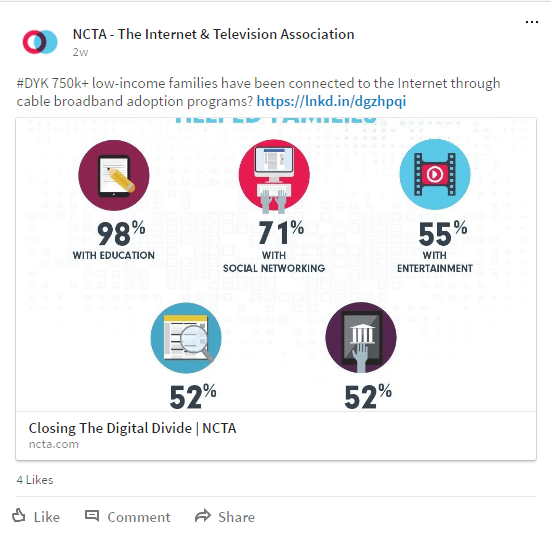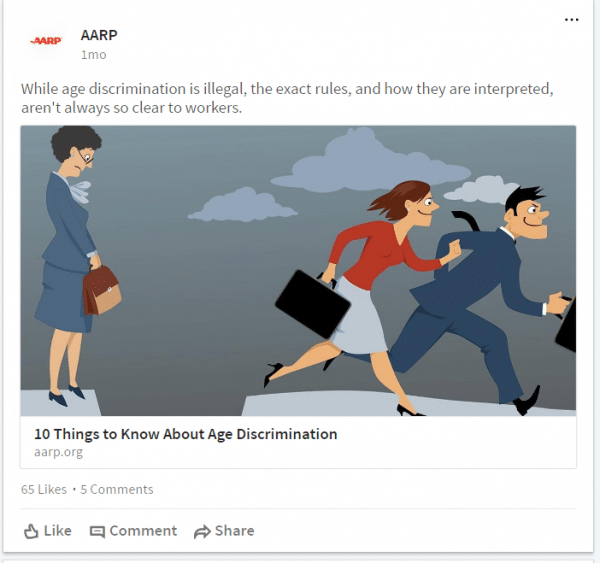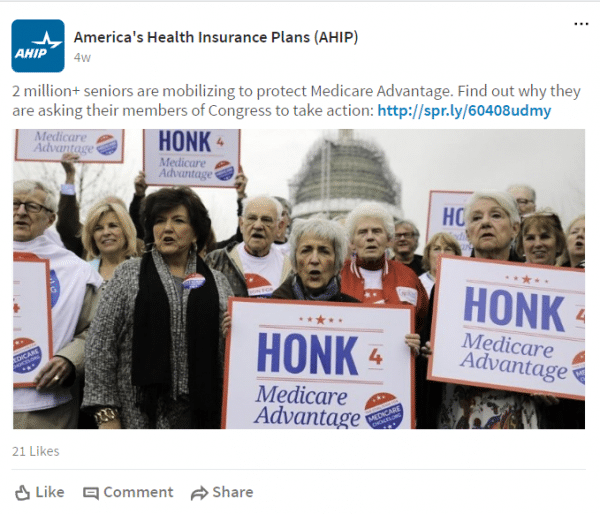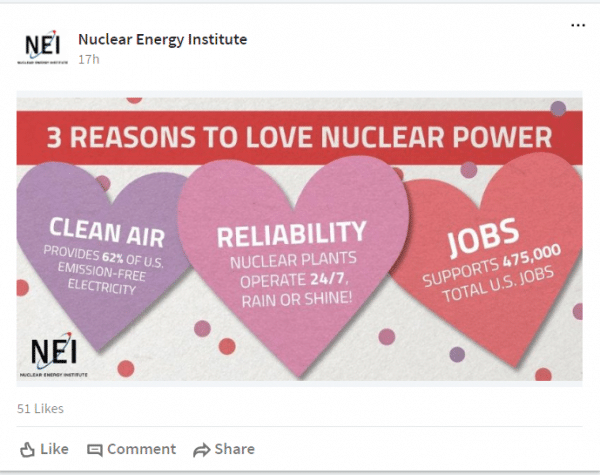How Associations Are Using LinkedIn for Public Affairs and Thought Leadership
LinkedIn is a professional, online social community with over 450 million users worldwide.
The platform has the unique ability for associations to use social communications as an engagement tool geared toward positioning your organization as a thought leader on key industry topics and public policies that affect members. Below are six examples of associations using LinkedIn to engage with their members and other stakeholders around important issues.
National Cable and Telecommunications Association (NCTA)
NCTA’s LinkedIn content focuses on building support for their key public policy issues and serves to drive traffic to their policy position pages on their website. NCTA builds their content strategy to educate and motivate their members around their advocacy efforts. With over 32,000 followers on the platform, NCTA’s most successful posts are infographics that use their data to support their public policy positions.

AARP takes a hyper-focused approach to their LinkedIn page and chooses to use the platform to solely focus on professional and workforce issues related to older Americans. AARP takes positions on wide variety of policy issues and uses social media to engage their advocates, but the association doesn’t use LinkedIn for these types of engagement. Because LinkedIn is a professional platform, AARP posts content to inform their members of the laws and regulations around age discrimination and other tools that older Americans can use to handle issues in their workplace.

Pharmaceutical Research and Manufacturers of America (PhRMA)
PhRMA takes a blog-like approach to their LinkedIn page, and curates news, articles and blog links to provide their audience with the most up-to-date information about issues affecting their industry. They routinely feature their recent advocacy and public affairs campaign Go Boldly. PhRMA crafts posts without using technical industry terminology and uses eye-catching images to effectively engage their 8,000 followers who have come to expect the latest updates on biomedical advancements and timely information about healthcare legislation on Capitol Hill.

American Petroleum Institute (API)
Representing America’s oil and natural gas industry, API’s LinkedIn page focuses on educating consumers and changing the online conversation about the industry. Their recent posts using data-heavy infographics and animated videos are part of their larger Power Past Impossible campaign, which seeks to educate consumers of the benefits and diversity of petroleum production and innovation in the U.S.

America’s Health Insurance Plans (AHIP)
AHIP represents the health insurance community. AHIP uses LinkedIn to feature the latest information about healthcare legislation, explain how to get access to premium healthcare and post about family and health issues. They also effectively use the platform to demonstrate grassroots support for their efforts and their content often puts a human face to policy issues that affect millions of Americans.

Nuclear Energy Institute (NEI)
NEI’s 10,000 followers receive regular updates on the industry job market, industry innovations and legislation that could impact the future of nuclear energy. The future of nuclear power may be uncertain in the U.S., but NEI’s LinkedIn page has become an active voice in advocating for the preservation of nuclear energy use. They use the platform to make compelling policy arguments with infographics, video and earned media.


